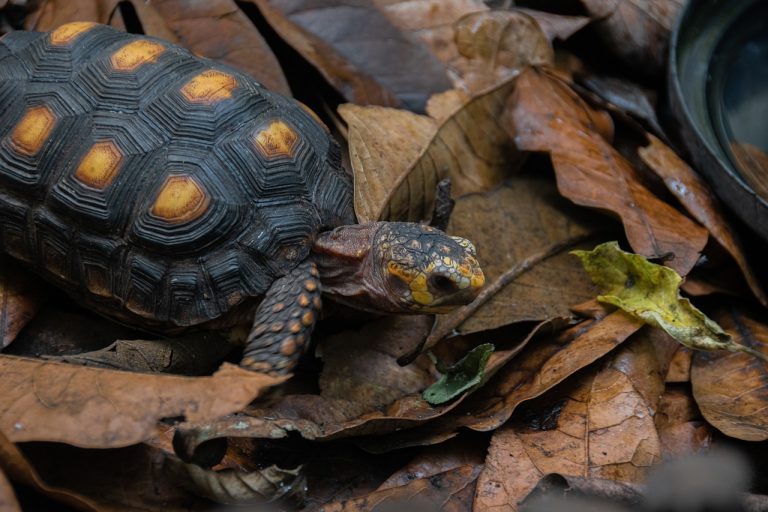What Do Yellow Bellied Turtles Eat?
Yellow-bellied turtles are often recommended as ideal pets for beginners due to their low maintenance requirements. Feeding these turtles is particularly straightforward. Below, I’ll discuss the yellow-bellied turtle diet in detail:
Plant Matter (50 – 60%): Yellow-bellied turtles benefit from a diet rich in plant matter, including kale, parsley, water lily, duckweed, and other leafy greens.
Animal Matter (20 – 25%): They also require animal matter in their diet, such as spiders, crayfish, worms, insects, and even small portions of chicken.
Pellets (25%): Commercial turtle pellets designed specifically for yellow-bellied turtles can provide essential nutrients and should make up a portion of their diet.
Fruits (Occasional Treat): While not a significant portion of their diet, yellow-bellied turtles can enjoy occasional treats of fruits such as bananas, apples, melons, and berries.
Supplements: It’s essential to supplement their diet with Vitamin D3, calcium, and multivitamins to ensure they receive all necessary nutrients for optimal health.
For more detailed information on the yellow-bellied turtle diet and care, please read the article below.
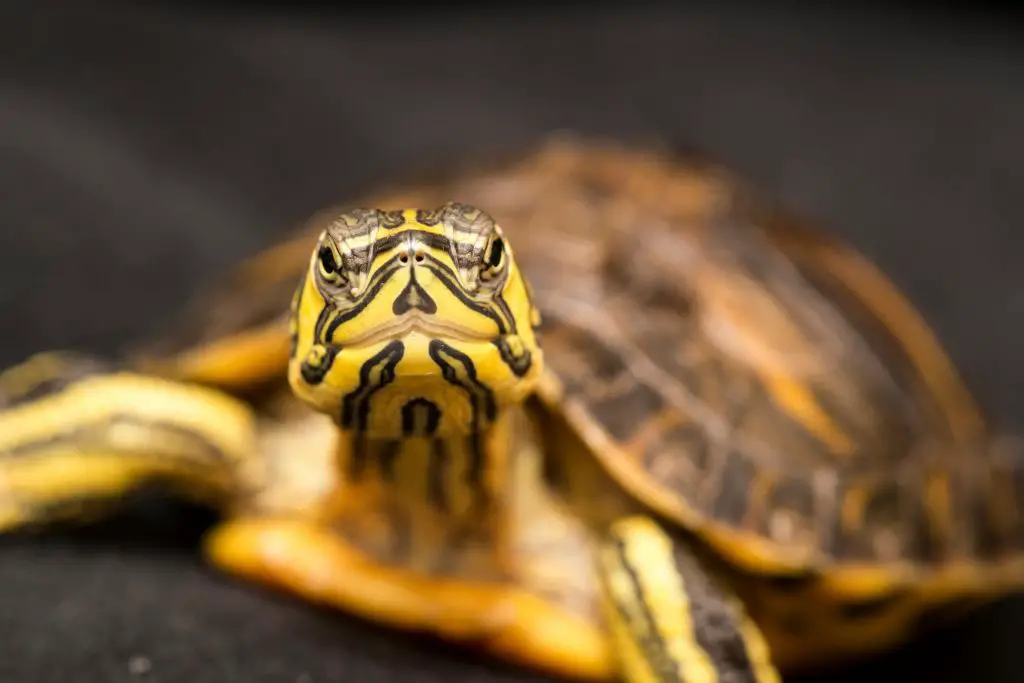
Yellow Bellied Turtle Complete Diet
As mentioned, yellow-bellied turtles have an omnivorous diet, which includes a variety of plant matter, animal protein, fruits, and supplements. However, it’s essential to be selective about the foods you offer them, as their digestive systems differ from ours, and improper diet can lead to illness or even death.
Here are the safe food lists for yellow-bellied turtles:
1. Plant Matter & Vegetables (50 – 60%):
- Asparagus
- Algae
- Beet
- Broccoli
- Brussel sprout
- Cauliflower
- Carrot
- Carrot tops
- Collard greens
- Corn
- Dandelion green
- Duckweed
- Kale
- Green beans
- Pepper
- Pumpkin
- Parsley
- Romaine lettuce
- Sweet potato
- Squash
- Tomato
- Turnip greens
- Water lily
- Waterweed
It’s crucial to ensure that the items are nutritious, contain low oxalate levels, and maintain a proper calcium-phosphorus balance (3:1). Avoid vegetables with high water content and low mineral content like iceberg lettuce and cucumber, as they can lead to malnutrition.
2. Fruits (Occasional Treat):
- Apples
- Apricot
- Banana
- Blueberries
- Cantaloupe
- Coconut
- Kiwi
- Grapes
- Watermelon
- etc.
Fruits should be given as occasional treats due to their high sugar content and low nutritional value. They can be used to boost appetite or as rewards for learning new behaviors.
3. Animal Protein (20 – 25%):
- Insects (crickets, cockroaches, mealworms, waxworms, etc.)
- Shrimp
- Chicken
- Salmon
- Fish
- Tadpoles
- etc.
Yellow-bellied turtles prefer animal proteins over plant matter, but it’s essential to maintain a balance and include greens in their diet. Remove bones from meat and avoid seasoning with salt or spices.
Live insects can be beneficial for their enthusiasm and appetite, but packaged dried alternatives can be used when live insects aren’t feasible.
By providing a balanced diet with a variety of safe foods, you can ensure the health and well-being of your yellow-bellied turtle.
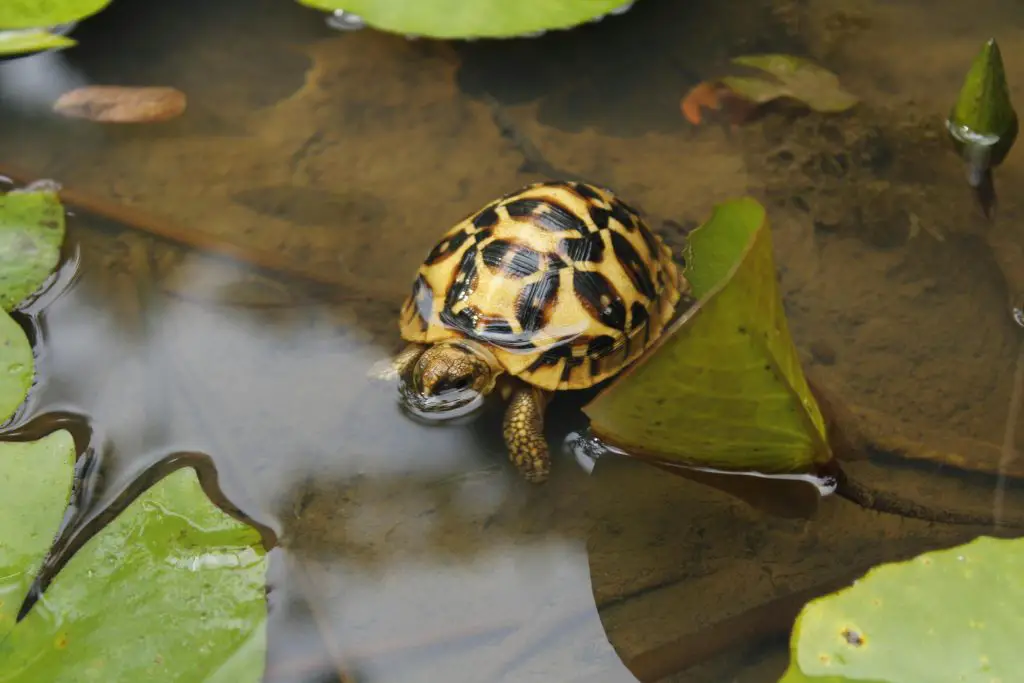
Do Yellow Bellied Turtles Need Supplements?
Supplements are essential for all turtle species, including yellow-bellied turtles. In captivity, it’s challenging to meet the turtles’ 100% mineral requirements solely through diet. Therefore, supplements are necessary to address any deficiencies and ensure optimal health.
Typically, calcium and vitamin D3 are vital components of the turtle’s diet, while multivitamins are considered optional. It’s recommended to sprinkle supplements two or three times a week.
Calcium and vitamin D3 supplements are particularly crucial for building strong bone and shell structures in yellow-bellied turtles. Additionally, they play a significant role in preventing metabolic bone disease (MBD). However, it’s essential to note that supplements are ineffective without adequate UV light exposure in the enclosure.
It’s common for turtles to dislike the taste of calcium supplements, leading them to avoid meals with the powder. However, there are effective strategies to ensure your turtles receive the necessary calcium intake without resistance.
Can You Feed Yellow Bellied Turtles Pellets?
Pellets are a common staple in turtles’ diets. While vegetables, leafy greens, and animal proteins are essential components, they may not always meet the turtles’ mineral requirements entirely. Therefore, veterinarians often recommend supplementing meals with pellets to ensure adequate nutrition.
However, it’s crucial to exercise caution with pellet consumption. Offering too many pellets can be harmful to turtles. It’s advised not to exceed the pellet limit of 25% of their overall diet. Striking a balance between pellets and other food sources is essential for maintaining the turtles’ health and well-being.
11 Foods That Are Poisonous For Yellow Bellied Turtles
Certain types of foods are not suitable for a turtle’s digestive tract and can lead to health issues. These include:
- Dog food
- High-fat protein
- Sausage
- Burger
- Bacon
- Fries
- Candy
- Bakery items
- Sweets
- Milk
- Cheese, etc.
While yellow-bellied turtles may eagerly devour these foods, they can quickly lead to vomiting and diarrhea. Therefore, it’s best to avoid processed items as much as possible to ensure the health and well-being of the turtles. Opting for a natural and balanced diet consisting of appropriate fruits, vegetables, animal proteins, and supplements is essential for their overall health.
How Much Should You Feed The Yellow Bellied Turtles?
Yellow-bellied turtles are known for their opportunistic feeding behavior, inherited from their wild ancestors. This instinct often leads them to continuously beg for food even after having a full stomach.
Though, it’s crucial not to overfeed them, as this can lead to obesity and health issues. To manage food quantity effectively, I follow two popular methods:
- 15-Minute Rule: This method involves offering more than enough food to the turtle and allowing it to eat as much as it wants within a 15-minute time frame. Vets suggest that this short feeding session is sufficient for the turtle to become full. However, there is a risk of food wastage with this method.
- Head Method: With this method, you imagine a bowl the size of your yellow-bellied turtle’s head if it were hollow. You then fill this container with the food items and offer it to your pet. This method helps in gauging the right amount of food, although it may take some time to get the quantity correct initially.
It’s essential to note that a turtle’s appetite changes as it grows older. Therefore, if using a bowl to track meal quantity, it’s important to regularly update the container to accommodate the turtle’s changing needs. By carefully managing food quantity, we can ensure the health and well-being of our yellow-bellied turtles.
How Often Should You Feed Your Yellow Bellied Turtle?
As yellow-bellied turtles mature, their dietary preferences evolve, reflecting their changing nutritional needs. This means their appetite isn’t constant, and their feeding routine must adapt accordingly.
- Feeding Schedule For Baby Yellow-Bellied Turtles:
Hatchlings are more susceptible to diseases due to their weak immunity. Therefore, they require more frequent feeding to build immunity and develop a robust body structure. Feed baby yellow-bellied turtles once or half the meal every day, offering meals twice a day. - Feeding Schedule For Young Yellow-Bellied Turtles:
Young yellow-bellied turtles, typically around 1-year-old, thrive on an every-other-day feeding routine. Alternatively, meals can be divided into portions and offered daily to ensure they receive adequate nutrition for growth. Since they are still in their growing phase, their meals should contain essential minerals, vitamins, and proteins. - Feeding Schedule For Adult Yellow-Bellied Turtles:
Adult yellow-bellied turtles have a diminished appetite compared to younger counterparts. Therefore, feeding them once every 3 days is sufficient. Focus on incorporating more vegetables and greens into their meals to meet their nutritional requirements while aligning with their reduced appetite.
Where & When To Feed The Yellow Bellied Turtles?
Each turtle has its preferred dining spot, and it’s essential to recognize where your pet yellow-bellied turtle likes to eat. Typically, these turtles enjoy dining in the water or occasionally on the dock. Pay attention to their eating patterns and offer food in their favored locations.
After feeding, promptly remove any leftovers, regardless of where the turtles dine. Additionally, installing a robust filter is crucial to maintaining healthy water chemistry for the turtles.
Turtles tend to be most hungry during the morning and evening hours. Therefore, consider offering meals during these times to align with their natural feeding rhythms. If maintaining a feeding schedule becomes challenging, you can opt for an automatic turtle feeder to ensure your pets receive their meals consistently.
My Yellow Bellied Turtle Not Eating: What To Do?
There are several reasons why a yellow-bellied turtle may refuse to eat, and it’s essential to consider each potential cause:
- Temperature Drop:
Yellow-bellied turtles thrive in specific temperature ranges, with ideal water temperatures between 72°F and 80°F and basking temperatures between 90°F and 95°F. A drop in temperature can slow down their metabolism, leading to a loss of appetite. Ensure that the heat settings in the enclosure are adjusted accordingly to maintain optimal temperatures. - Hibernation:
If the temperature consistently drops, your turtle may enter a hibernation-like state. During this period, turtles do not eat or drink. While hibernation is natural in the wild, it can be risky for captive turtles. Consult a veterinarian if you suspect your turtle is hibernating, and gradually raise the temperature to wake it up safely. - Illness:
Loss of appetite is a common symptom of illness in turtles. If your yellow-bellied turtle refuses to eat, monitor for signs of physical illness and seek veterinary care if necessary. Once the turtle is treated and recovers, its appetite should return to normal. - Stress:
Yellow-bellied turtles are susceptible to stress, which can result from various factors such as disturbance, overcrowded enclosure, improper temperature, or bullying from tank mates. Stress can significantly affect their appetite, causing them to lose interest in food. Ensure that the turtle’s environment is calm and conducive to its well-being. - Boring Meals:
Just like humans, turtles can get bored with the same meals every day. It’s essential to provide variety in their diet by experimenting with different food items while ensuring they are safe and nutritious. This can help stimulate their appetite and maintain their interest in eating.
Yellow Bellied Turtles Obesity & Other Diseases
Poor food habits can lead to various unwanted physical conditions in yellow-bellied turtles:
- Obesity:
Overfeeding can lead to obesity in yellow-bellied turtles. Obesity negatively impacts their mobility, as excessive fat accumulation around the neck or limbs can impede movement and prevent them from fully retracting into their shells. Additionally, obesity increases the risk of kidney failure and liver diseases. Managing obesity requires following a strict diet and incorporating regular exercise into the turtle’s routine. - Malnutrition:
Underfeeding or providing improper food selection can result in malnutrition in yellow-bellied turtles. A diet lacking essential nutrients weakens the turtles’ immune systems, making them more susceptible to diseases. - Pyramiding:
Although yellow-bellied turtles enjoy animal protein, overfeeding them can lead to pyramiding. This condition causes abnormal scute growth on the turtle’s shell, which is irreversible. Balancing the turtle’s diet with the appropriate proportion of protein can help prevent pyramiding. - Unhealthy Shedding:
Turtles naturally shed their shells as they grow. However, overfeeding can disrupt their growth and shedding process, leading to unhealthy shedding. This condition requires dietary control and veterinary intervention to ensure the turtles’ health and well-being.
Can You Hand Feed Yellow Bellied Turtles?
Hand-feeding yellow-bellied turtles can be a rewarding experience for many turtle owners. However, it’s essential to recognize that not all turtles enjoy this interaction.
Turtles, like humans, have their preferences, and some may prefer eating in water, while others may not. Forcing a turtle to eat in a manner it dislikes can lead to stress and discomfort for the pet.
Before attempting hand-feeding, it’s crucial to observe your turtle’s habits and preferences. If the turtle appears comfortable with hand-feeding, you can proceed cautiously. However, it’s advisable to use protective gear such as gloves and tongs to prevent any accidental bites from the turtle, which can be painful.
Ultimately, the well-being and comfort of the turtle should be the priority when considering hand-feeding. If the turtle shows signs of stress or discomfort, it’s best to respect its preferences and find alternative feeding methods that suit its needs.
How Long Can Yellow Bellied Turtles Go Without Food?
Yellow-bellied turtles, like many turtle species, have a slow metabolism, allowing them to go extended periods without food. In optimal health, these turtles can survive for about a month without eating.
During the colder months, yellow-bellied turtles experience a further slowdown in metabolism due to decreased temperatures. This often leads to a period of dormancy known as hibernation, during which the turtles may cease eating and drinking entirely. They become inactive and spend much of their time sleeping. A hibernating turtle can typically survive for 4 to 6 months without food.
It’s essential to note that while turtles can endure prolonged periods without food, they cannot survive without access to water for extended periods. Therefore, it’s crucial to ensure that yellow-bellied turtles always have access to fresh water.
Furthermore, while turtles have the ability to survive without food for extended periods, it’s not advisable to force them to do so. Starvation can lead to malnutrition and weaken the turtle’s immune system, making them more susceptible to severe and potentially fatal diseases. It’s essential to provide regular, balanced meals to maintain the health and well-being of yellow-bellied turtles.
Conclusion
Only a feeding guide is not enough to raise a healthy yellow bellied turtle. But you will need a complete care sheet for this species.
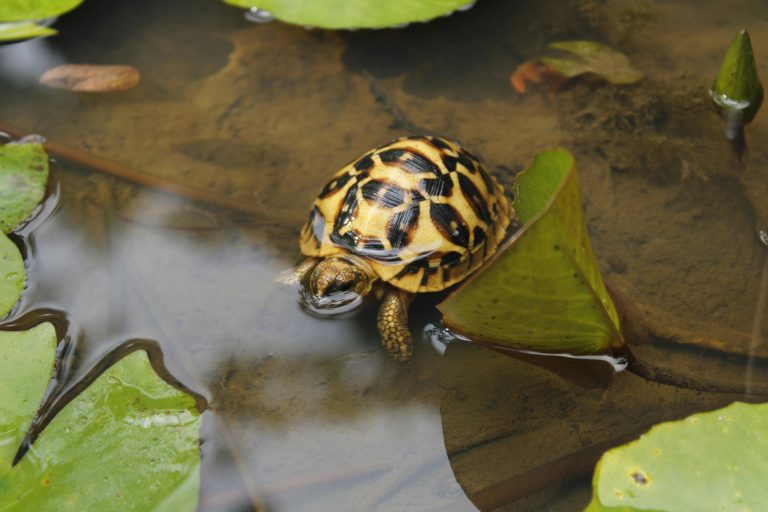
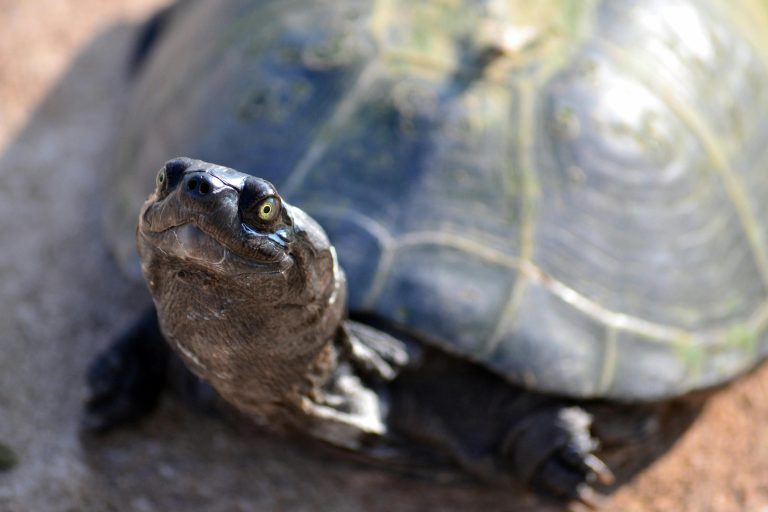
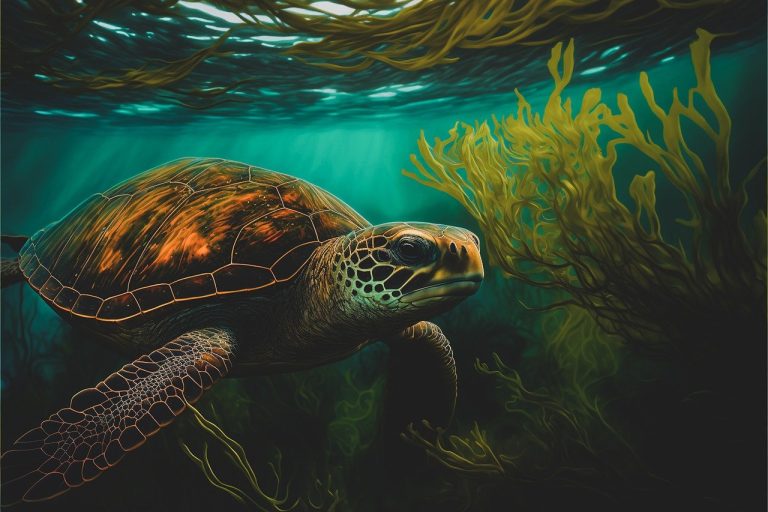
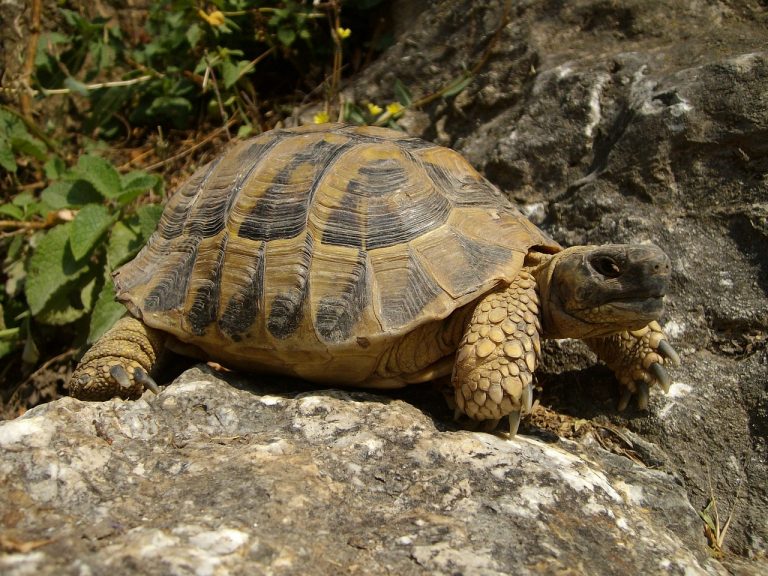
![Do Turtles Bring Good Luck? [Feng Shui Turtles]](https://spreadhapiness.com/wp-content/uploads/2024/03/feng-1-768x512.jpg)
